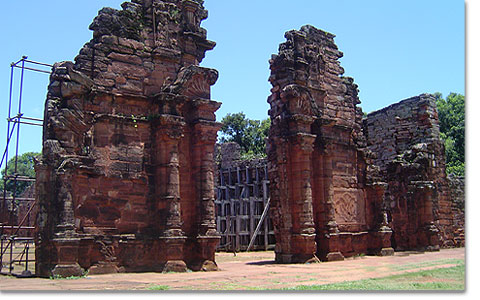
|
| Las Misiones Jesuíticas guaraníes: San Ignacio Mini, Fachada del frente de la iglesia Missions of the Jesuits: San Ignacio Mini, Façade of the church Jesuitenmissionen: San Ignacio Mini, Fassade der Kirche |
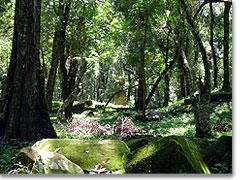 |
|
Loreto Loreto Loreto |
|
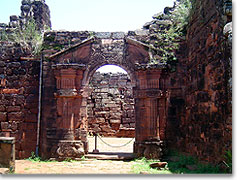 |
|
San Ignacio Mini, acceso a la Sacristia San Ignacio Mini, entrance of the sacristy San Ignacio Mini, Eingang zur Sakristei |
|
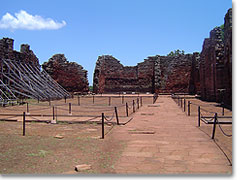 |
|
San Ignacio Mini: Interior de la iglesia San Ignacio Mini: Interior of the church San Ignacio Mini: Inneres der Kirche |
|
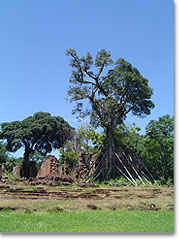 |
|
Santa Ana: Arbol sobre el muro Santa Ana: tree growing on the wall Santa Ana: ein Baum wächst auf der Mauer |
|
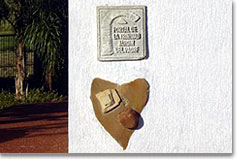 |
|
Simbolo y piedra fundamental del Santuario Ciudad del Este Symbol and corner stone of the Shrine in Ciudad del Este Symbol und Grundstein des Heiligtums in Ciudad del Este |
|
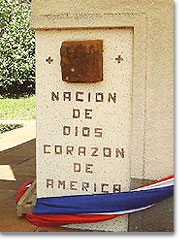 |
|
Piedra Fundamental del Santuario Nacional, Tuparenda Corner Stone of the National Shrine, Tuparenda Grundstein des Landesheiligtums, Tuparenda Fotos: Cabral © 2007 |
|
|
PARAGUAY, Javier Cabral. In the Book "Retreats" by Father Nicolas Schwizer we read about the "Nation of God": The expression comes from Saint Augustine from one of his works named: ‘De civitate Dei" (About the Nation of God). In this work the saint contrasts the Nation of God to the diabolic Nation.
Father took this idea of the Nation of God not only from Saint Augustine, rather he also took carried in his own blood: ‘Create a a small Kingdom that is worthy of the name of Nation of God and it is a reflection of the Kingdom of God. With this idea, Father Kentenich founded the Marian Congregation and later, the Schoenstatt Family. He considered it as a Kingdom of God in the form of a Nation of God. Furthermore, Father discovered that the Jesuit settlements also had the same goal of creating a small Nation of God. That is why he chose the Settlements of Paraguay as a subject of study for the Marian Congregation during those years (1915/16 and 1916/7). And as a point of comparison between the Settlements and the Congregation he took the idea of the Nation of God that both foundations tried to carry out and to embody.
A little bit of history about the settlements
Initial observation: these subjects are very broad; the purpose of this article wants is to motivate the curious reader to look for more information in books or on different web pages.
It is a very broad subject, but we only stress that from the middle of the XVI Century and for almost 150 years of the Guarani Jesuit Missions they were consolidated in a broad region that includes part of what today are the countries of Paraguay, Argentina, Brazil and Uruguay. It is estimated that at their height, in 1732, they housed a population of more than 140,000 indigenous.
In the book "To be a Nation of God" by Carmen Cosp de Santa Cruz we read: "the communitarian spirit. One of the aspects that is most impressive to the sociologists, economists and the students of politics, even now, is the organization of the property and the work in the missions of Paraguay. In these settlements there were two kinds of property: the collective one and the private one. The Tupámba’é or the things of God was the one where all that was produced was used for the needs of those who could not work and the abá mba’é was: what belonged to the Indian whose products belonged to him and to his family. The Indians worked for both properties."
There were more than 30 organized towns, that awakened the admiration and the surprise, but also the suspicions and envy of the politic power, which had the Jesuits expelled.
The missions were left abandoned to their luck since 1767. The question remains: how would the history of the enculturation of Christianity, the history of the indigenous people have developed…if the Jesuits had been able to continue…
Sackings also contributed to the loss of many of the relics, but the archaeological richness of its ruins remain today as an example of an untapped experience of evangelization throughout the world.
In 1984 they were declared as a Heritage of Humanity.
Presently the best known ones are Trinity and Jesus in Paraguay, Saint Ignatius Miní in Argentina and Saint Angelo in Brazil. The ruins of Saint Ana and Loreto in Argentina also have a good infrastructure for tourists.
The settlements today.
Upon entering some of them, the silence is impressive, only the birds break the silence. As you walk where the houses of the Indians were built, the fallen leaves form something like a mattress that is several centimeters deep, the feet sink in such places. The jungle took over its previous space, taking over again of what was abandoned.
In the old churches where up to two thousand Indians congregated, now the same ones, in Loreto for example, were substituted by gigantic trees that are standing in a permanent way in the middle of the walls.
Sometimes it is difficult to distinguish the buildings, since the green moss covers each one of the stones; in other places the steel and wooden structures support the columns to prevent them from falling.
In some cases large trees have grown over the old walls, in other cases the fig tress have covered the columns covering them in a curious way.
In spite of the abundant vegetation, the old system of organization can still be perceived in all of them, with a patio in the center, the church in front, and the rest of the buildings.
In other settlements there is less vegetation and more details can be observed on the floors of the churches, and the figures on the walls, etc.
Inheritance
In Paraguay the national mission is "Nation and God, heart of America", which wants to save and relive this experience, tying it to history. In the Shrine of Tuparenda the cornerstone has this inscription.
In the symbol of the Shrine of Ciudad del Este a broken arch anda portico that is at entrance that leads us to the Nation of God can be seen. It represents the truncated work of the Jesuits and our commitment to continue building the Nation of God in Alto Paraná.
Final observation
The buildings were already like that when we visited them.
Translation: Celina Garza, Harlingen, TX, USA